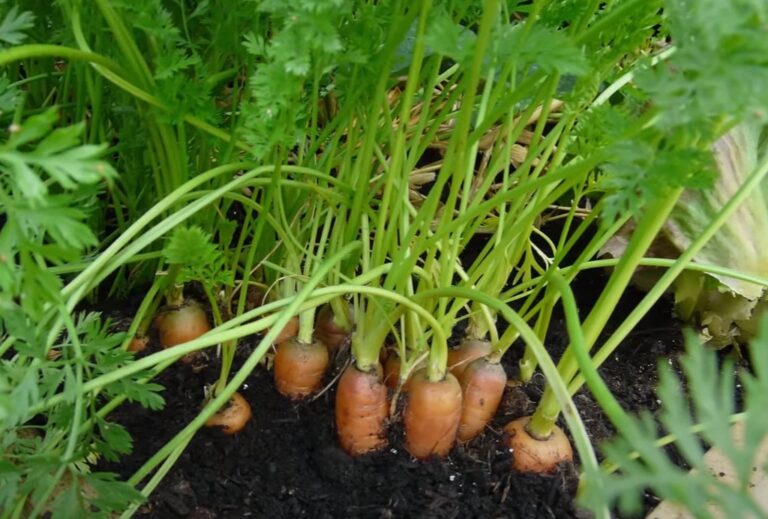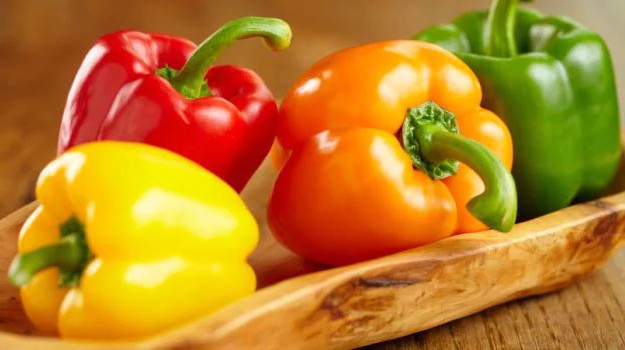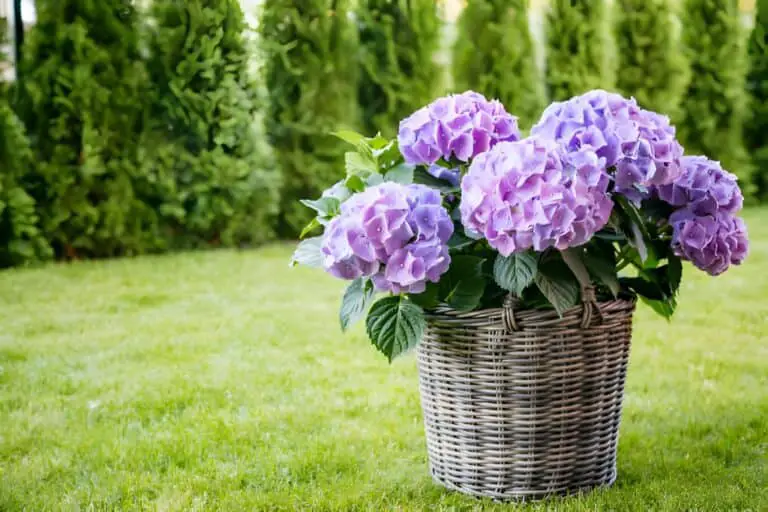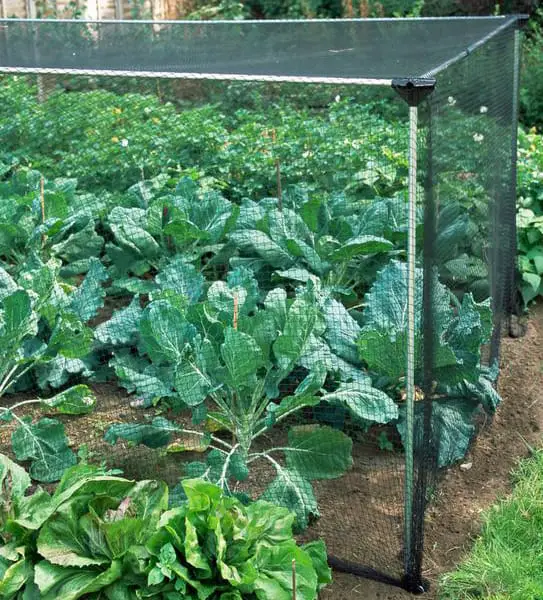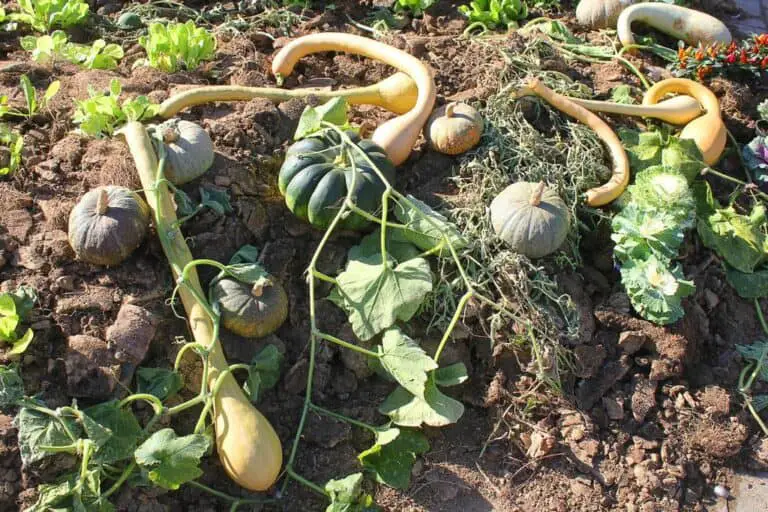Timing is Everything: When to Plant Broccoli for a Bountiful Fall Harvest

Are you a broccoli lover who can’t get enough of its vibrant green florets and incredible health benefits? If so, why limit your enjoyment to just one season?
Imagine savoring the crisp, flavorful goodness of homegrown broccoli well into the fall months. Yes, you read that right—fall! Contrary to popular belief, broccoli isn’t just a springtime delicacy. With the right knowledge and timing, you can plant broccoli for a bountiful fall harvest that will have you eagerly heading to your garden even as the leaves start to change color.
In this article, we will guide you through the fascinating world of fall planting, revealing the secrets to successfully growing this nutrient-packed vegetable when the temperatures begin to cool.
So, get ready to expand your gardening repertoire and prepare for an extended broccoli season that will leave your taste buds delighted and your dinner plates abundant.
Understanding Broccoli’s Growing Needs
Before diving into the details of planting, it’s crucial to understand the growing requirements of broccoli. Being a cool-season crop, broccoli prefers moderate temperatures between 60°F (15°C) and 70°F (21°C).
It thrives in full sun exposure, although it can tolerate partial shade. Well-draining soil rich in organic matter is essential for optimal growth.
Benefits of Planting Broccoli in the Fall
Planting broccoli in the fall offers several advantages over spring planting. First, fall-grown broccoli tends to have a milder flavor, as the cooler temperatures slow down its growth and prevent bitterness. Second, the absence of extreme heat reduces the risk of bolting, which is when the plant prematurely produces flowers and seeds. Lastly, fall planting extends the harvesting season, allowing you to enjoy fresh broccoli well into late autumn.
Determining the Planting Date

When it comes to planting fall broccoli, timing is everything. The key to determining the ideal planting date lies in understanding the average first frost date in your region. By counting back 85 to 100 days from that anticipated frost, you can calculate the timeframe needed for your broccoli to reach maturity before the cold weather sets in.
Broccoli is a cool-weather crop that thrives in cooler temperatures. However, it’s important to keep in mind that it matures at a slower pace when the weather is colder. That’s why allowing for additional time is crucial to ensuring your broccoli has ample opportunity to develop fully and produce those delicious, tightly-packed heads.
To accurately determine your planting date, consider consulting local resources such as agricultural extension offices or gardening guides specific to your region. They often provide valuable information about average frost dates, giving you a starting point to work backward and plan your planting accordingly. By adhering to this calculated timeline, you can optimize your chances of a successful fall harvest of crisp, flavorful broccoli heads.
Recommended Fall Planting Dates by Region
The timing of fall planting varies depending on your location. Here is a general guideline for recommended planting dates based on different regions:
| Region | Planting Date Range |
| Northern | July to August |
| Central | August to September |
| Southern | September to October |
These dates serve as a starting point, and you can adjust them slightly based on your specific microclimate and weather patterns. Remember, it’s always better to start a bit earlier than to risk a late planting.
Preparing the Soil
When it comes to preparing the soil for your broccoli plants, a little upfront effort goes a long way. Start by giving the planting area a thorough cleaning. Remove any weeds, rocks, or debris that might impede the growth of your broccoli. This clean slate ensures that your plants have the best chance of establishing themselves without competition from unwanted interlopers.
To create an optimal growing environment, consider conducting a soil test. This simple step allows you to gauge the pH level of your soil. Broccoli prefers a slightly acidic to neutral pH, falling within the range of 6.0 to 7.0. If your soil’s pH is outside this range, you can adjust it accordingly using organic amendments such as lime to raise the pH or sulfur to lower it.
Striving for the right pH balance sets the stage for your broccoli plants to absorb nutrients efficiently and thrive.
Enhancing the soil’s fertility is another crucial aspect of soil preparation. Incorporating compost or well-rotted manure into the soil not only adds vital nutrients but also improves its structure. This organic matter enriches the soil, providing essential elements that support healthy plant growth.
It also enhances the soil’s ability to retain moisture and promotes good drainage, preventing waterlogged conditions that can be detrimental to broccoli plants.
Planting Broccoli Seeds
Broccoli can be grown from seeds or transplants. If you choose to sow seeds directly into the ground, follow these steps for successful planting:
- Germination indoors: Start the seeds indoors 6 to 8 weeks before the anticipated planting date. Use seedling trays or pots filled with a good-quality seed-starting mix. Keep the soil consistently moist and maintain a temperature of around 70°F (21°C) to encourage germination.
- Transplanting: Once the seedlings have developed two to four true leaves, broccoli is ready to be transplanted. Harden off the seedlings by gradually exposing them to outdoor conditions over the course of a week. Dig holes in the prepared soil, spacing them 18 to 24 inches apart. Gently place the seedlings in the holes, ensuring that the soil level matches the level of the seedling’s base.
- Watering and Mulching: After planting, water the seedlings thoroughly to provide them with the necessary moisture. Broccoli plants require consistent moisture throughout their growth cycle, so it’s important to water them regularly, especially during dry spells. Applying a layer of organic mulch around the plants helps retain moisture, suppresses weed growth, and maintains a more even soil temperature.
Read: Broccoli Defense Chemical Mechanism: What Is That?
Caring for Fall-Planted Broccoli
Once your broccoli plants are in the ground, proper care is crucial for their growth and development. Here are some essential tips to ensure a bountiful fall harvest:
- Watering: As mentioned earlier, regular watering is essential for broccoli plants. Aim for deep watering to encourage root growth and avoid shallow watering that may lead to weaker plants. Water the soil at the base of the plants rather than overhead to prevent fungal diseases. During hot and dry periods, consider using drip irrigation or soaker hoses for efficient water delivery.
- Fertilizing: Broccoli plants benefit from regular feeding to support their growth. Prior to planting, incorporate a balanced fertilizer or compost into the soil. Additionally, side-dress the plants with a nitrogen-rich fertilizer, such as fish emulsion or blood meal, every three to four weeks. Be mindful not to over-fertilize, as excessive nitrogen can result in abundant foliage but smaller heads.
- Weed Control: Keeping the planting area free from weeds is essential, as they compete with broccoli plants for nutrients and water. Regularly remove any weeds by pulling weeds or spraying near the plants. Applying a layer of mulch not only helps with moisture retention but also suppresses weed growth, reducing the need for constant weeding.
- Pest and Disease Management: Broccoli plants can be susceptible to various pests and diseases, including aphids, cabbage worms, and fungal infections. Monitor your plants regularly and take appropriate action if you notice any signs of infestation or disease. Consider using organic pest control methods, such as handpicking insects, applying insecticidal soap, or introducing beneficial insects like ladybugs.
- Supporting the Plants: As your broccoli plants grow, they may benefit from additional support. Consider using stakes or cages to provide support and prevent the plants from toppling over under the weight of the developing heads. Secure the plants gently to avoid damaging the stems.
Harvesting Fall Broccoli
The time to harvest your fall-planted broccoli will depend on the specific variety you’ve chosen and the growing conditions. Generally, you can expect to harvest broccoli heads around 70 to 100 days after transplanting.
The heads should be firm and compact, with tight florets. Harvest them before the buds start to open and turn yellow.
To harvest the broccoli heads, use a sharp knife or pruners to cut the stems at an angle, leaving several inches of the stem attached. This allows for potential side-shoot production, known as “secondary heads,” which can be harvested later. Secondary heads are smaller but equally delicious and can prolong your broccoli harvest.
Enjoying Your Fall Broccoli Harvest
Once harvested, it’s time to savor the flavors of your hard work. Broccoli can be enjoyed in various ways, from steaming and stir-frying to roasting and incorporating it into delicious soups and salads. The possibilities are endless!
Remember to store your harvested broccoli properly to maintain its freshness. Place unwashed heads in a plastic bag and store them in the refrigerator’s crisper drawer. Properly stored broccoli can last for up to a week, allowing you to enjoy its nutritious benefits over multiple meals.
Conclusion
With proper planning, timing, and care, you can cultivate a bountiful fall harvest of broccoli. By understanding the plant’s growing requirements, determining the appropriate planting dates, and following the recommended steps for soil preparation, seeding, and caring for the plants, you can ensure a successful fall crop. Remember to provide adequate water, fertilize appropriately, control weeds and pests, and support the plants as they grow.
When the time comes to harvest, be sure to cut the broccoli heads at the right stage, when they are firm and compact. Don’t forget to leave a portion of the stem attached to encourage the growth of secondary heads, which can provide additional harvests.
Once you’ve harvested your broccoli, explore different cooking methods to enjoy its delicious flavors. Whether steamed, stir-fried, roasted, or used in various recipes, broccoli is a versatile and nutritious vegetable that can enhance any meal.
Finally, make sure to store your harvested broccoli properly to maintain its freshness. Refrigerate the unwashed heads in a plastic bag, and consume them within a week for the best quality and flavor.
So, don’t limit your broccoli planting to just the spring season. With the right timing and proper care, you can experience the joy of a bountiful fall harvest. Start planning and preparing your garden now, and get ready to enjoy the vibrant green goodness of homegrown broccoli well into the autumn months.
Happy gardening and happy harvesting!
FAQs
Can broccoli be grown in containers?
Yes, broccoli can be successfully grown in containers as long as the container is large enough to accommodate the plant’s root system and has proper drainage.
How long does it take for broccoli seeds to germinate?
Broccoli seeds typically take around 5 to 10 days to germinate, depending on the temperature and growing conditions.
Can I grow broccoli from seedlings instead of starting from seeds?
Yes, you can purchase broccoli seedlings from nurseries or garden centers and transplant them into your garden instead of starting from seeds.
Can I save broccoli seeds for future planting?
Yes, you can save broccoli seeds for future planting. Allow some of the plants to mature fully and produce seed pods. Harvest the pods, dry them, and extract the seeds for storage.
How late can you plant broccoli for a fall harvest?
You can typically plant broccoli for a fall harvest up until around 85 to 100 days before the average first frost date in your region. It’s important to allow enough time for the broccoli to mature before the frost hits, as cooler temperatures slow down its growth.
Can I plant broccoli in the summer for a fall harvest?
While broccoli is a cool-season crop, planting it directly in the summer for a fall harvest may not be ideal. Broccoli prefers moderate temperatures and can struggle with heat stress. It’s generally recommended to start broccoli indoors during summer and transplant it outdoors when temperatures cool down.
What is the best month to plant broccoli?
The best month to plant broccoli depends on your specific region. As a general guideline, in northern regions, July to August is a suitable time for planting. In central regions, August to September is recommended, while in southern regions, September to October is ideal. Adjust these dates slightly based on your microclimate and the specific weather patterns in your area.
Can I grow broccoli in cold climates?
Yes, broccoli can be grown in cold climates. In fact, it thrives in cooler temperatures. However, it’s important to select cold-hardy varieties and provide proper protection during frosty periods. Using row covers, mulching, and providing additional insulation can help protect broccoli plants from freezing temperatures.
How long does it take for broccoli to mature?
Broccoli typically takes around 70 to 100 days to mature after transplanting. The exact time may vary depending on the variety and growing conditions. It’s important to count back from your anticipated first frost date to determine the appropriate planting time to allow for sufficient maturity and harvest.
How do I protect broccoli from frost?
To protect broccoli from frost, it’s crucial to take preventive measures. Covering the plants with row covers, blankets, or frost cloth can provide insulation and trap heat from the ground. Watering the soil before the expected frost can also help provide some protection, as moist soil retains heat better. Additionally, consider planting broccoli near structures or walls that can provide some shelter from the frosty winds.

